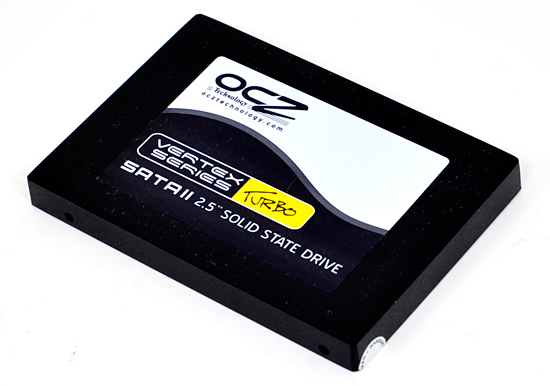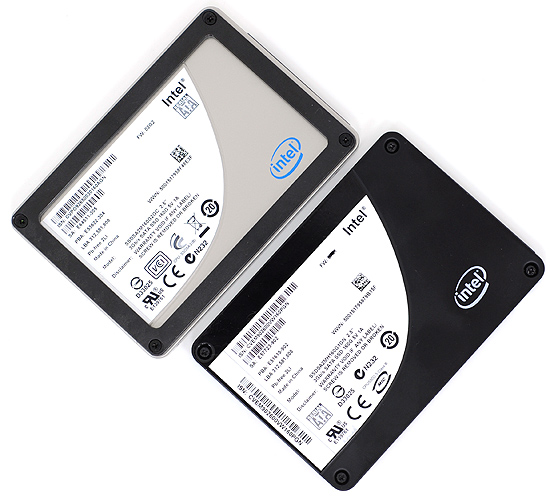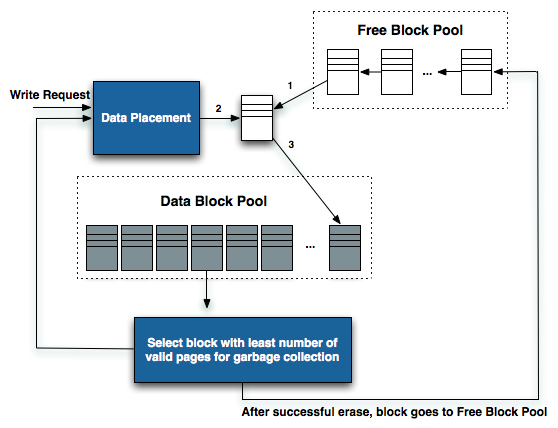The SSD Improv: Intel & Indilinx get TRIM, Kingston Brings Intel Down to $115
by Anand Lal Shimpi on November 17, 2009 7:00 PM EST- Posted in
- Storage
Update 2: Intel has given us an updated timeframe on a fixed version of its TRIM firmware. Intel will release the new firmware by the end of November 2009. More info here.
Update: Some users have had issues with Intel's TRIM firmware bricking their drives, Intel has since pulled the firmware while they figure out what's going on. If you've downloaded it but haven't updated, do so at your own risk. While we haven't had any issues on the three drives we've updated here others have had problems. We'll keep you posted. Intel's official statement is below:
“Yes, we have been contacted by users with issues with the firmware upgrade and are investigating. We take all sightings and issues seriously and are working toward resolution. We have temporarily taken down the firmware link while we investigate.”
Welcome to the anti-climax. After a year of talking about it, Windows 7 and TRIM are here. How does it feel to be a TRIMionaire?

Indilinx, as usual, was first. After a couple of false starts, the two tier 1 Indilinx partners (SuperTalent and OCZ) enabled TRIM on their Barefoot SSDs (OCZ Vertex, SuperTalent UltraDrive). OCZ calls its TRIM firmware 1.40 while SuperTalent calls it 1819. Update:As many of you have correctly pointed out, Crucial also has an 1819 update available for its SSDs. You can get the firmware for your drive from the links here:
| TRIM Firmware Download | |
| Crucial | M225 1819 |
| SuperTalent | UltraDrive GX 1819 |
| OCZ | Vertex /Agility 1.40 |
Intel held off to align with the release of Windows 7. Last week Windows 7 officially went on sale, and today Intel is delivering on its promise: this bootable iso will enable TRIM on X25-M G2 drives.

Only the X25-M G2 gets TRIM, the G1 (right) is left in the dust. The G1 is more resilient than the G2 when it comes to performance degradation over time since it doesn't have TRIM.
Alongside TRIM there’s one more surprise. If you own a 160GB X25-M G2, Intel boosted sequential write speeds from 80MB/s to 100MB/s:

The 80GB drives remain unchanged unfortunately. Intel still won’t tell us why write speeds are so low to begin with.
What TRIM Does
Before we get much further, and without diving into a complete rehash of how SSDs work (which I’ve done here, here and here again), I want to do a quick refresher on TRIM.
SSDs are made up of millions of NAND flash cells. They can be written to in groups called pages (generally 4KB in size) but can only be erased in larger groups called blocks (generally 128 pages or 512KB). These stipulations are partially the source of many SSD performance issues.
The whole ordeal gets more complicated when you realize that an SSD has no way of knowing when a file is deleted. Until an address gets used again, the SSD has to keep track of every last bit of data that’s written to it. The ATA-TRIM instruction tilts the balance in favor of the SSD.
In a supported OS (e.g. Windows 7), whenever you permanently delete a file or format your drive, the addresses that are erased are sent along with the TRIM command to the SSD’s controller. The TRIM instruction tells the SSD that those locations don’t contain valid data and that it no longer has to track them.

Simplified version of how a SSD controller works. TRIM helps the SSD clean blocks and add them to the free block pool
Again, I won’t go into great detail here but TRIM addresses a major part of the performance degradation over time issue that plague all SSDs. A TRIM enabled drive running an OS with TRIM support will stay closer to its peak performance over time.










162 Comments
View All Comments
chizow - Wednesday, October 28, 2009 - link
Ya they had them for about 4 hours in an AM Shell Shocker for $240, which is their MSRP. They also had them for that price for about 8 hours at launch and since then its been gouged as high as $400 for a G2. All the other retailers that are selling for around the $240 MSRP are drop-shipping directly from Intel so they typically don't have stock in-hand and are estimating anywhere from 2-8 weeks for delivery....crimson117 - Monday, October 26, 2009 - link
Amazon has decent prices on these, but shipping time ranges from 2 weeks to 8 weeks.80GB G2 for $244: http://www.amazon.com/Intel-Mainstream-Solid-Retai...">http://www.amazon.com/Intel-Mainstream-...-Retail-...
160GB G2 for $467: http://www.amazon.com/Intel-160GB-Mainstream-Retai...">http://www.amazon.com/Intel-160GB-Mains...-Retail-...
Xentropy - Sunday, November 1, 2009 - link
5 days later now, and Amazon's up to $599 for the 160GB, though they are in stock instead of shipping in several weeks.Exar3342 - Tuesday, October 27, 2009 - link
I bought a G2 80GB yesturday via Amazon from a 3rd party company; was $244.00 (OEM) version. Good times.strikeback03 - Monday, October 26, 2009 - link
With your recommendation to keep at least 20% of a drive as free space, should it be within a partition, or just leave some unpartitioned space on the drive?Anand Lal Shimpi - Monday, October 26, 2009 - link
Either way works, just don't put data on it :)Take care,
Anand
Doormat - Monday, October 26, 2009 - link
Anand: great review.The 40GB 5-channel version has read speeds of 170MB/s. Does this mean that if the 10-channel G2 weren't inhibited by SATA 3Gb/s, it would probably get 340MB/s? Or is there diminishing returns on adding more channels.
Also, any price cuts on the horizon or just stagnating until drives start shipping with SATA 6Gb/s support.
Anand Lal Shimpi - Monday, October 26, 2009 - link
It's possible. All of the high end SSDs are bound by the interface for sequential read speed. I'm not sure how fast the controller could go if it weren't bound by the interface, but over 300MB/s sounds quite likely.Flash prices haven't really gone down lately from what I'm hearing. I don't know of any price cuts on the horizon unfortunately. Next year.
Take care,
Anand
semo - Monday, October 26, 2009 - link
i don't think you will see any price cuts since intel can't make enough G2s.I tend to agree with others regarding SATA 3. If intel is not rushing to enable SATA 3 on their ICH anytime soon, why would they be coming out with SATA 3 devices?
ekerazha - Monday, October 26, 2009 - link
Anand,it's strange to see your
"Is Intel still my overall recommendation? Of course. The random write performance is simply too good to give up and it's only in very specific cases that the 80MB/s sequential write speed hurts you."
of the last review, is now a
"The write speed improvement that the Intel firmware brings to 160GB drives is nice but ultimately highlights a bigger issue: Intel's write speed is unacceptable in today's market."